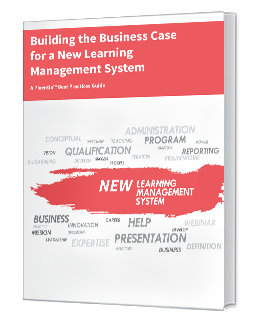
“If you don't know where you are going, you'll end up someplace else.” Yogi Berra’s famous quote tells us why we need to create a map before we start out on a journey.
When most people look for a checklist for purchasing a product, they expect to see a list of features to choose or a list of things to do during the purchasing process. We could give you the most comprehensive list of features and buying steps ever produced, and it would not get you closer to the right solution unless you know where you are going.
The initial steps in software selection are not about the software. They are about you and your organization. The first step is not even about learning. It is about where your company is headed.
Assess Strategic Alignment
Assess your workforce strategy:
- How does it support the business strategy? Assuming your business has a purpose to know where it is going and a strategy to get there, where is “there” and how does your workforce strategy fit into the plan?
- What does your workforce need to look like in five years?
- What are the current and future skill gaps, and how can you close them?
- How will your learning strategy support your workforce strategy? Go beyond the knowledge and skills of your employees and contingent workers. Include also the development of the people who lead them.
- Include Partners, your supply chain, your distribution channels, and your customers. Even if you are not ready to invest in extended enterprise learning, your company does have training responsibilities for each of those groups.
 Assess the Current State
Assess the Current State
Evaluate the tools and processes you use to manage learning today and how they measure up to your needs. The answers will change as you work with the main stakeholders, but right now you need to get your perspective. Be honest about where you are falling short. You will hear it from others, and you need to be able to acknowledge it and enlist their help in improving.
- What are you not doing well, or not at all?
- What is not engaging users?
- What functionality is not being used? Why?
- What inefficiencies exist because of the lack of integration?
- What reporting functions are weak or missing?
- How well does your organization comply with required training?
Start Building a Team
The purpose of your conversations with the key players in your organization is not to present your ideas. It is to listen to their needs.
This is not the time to discuss your plans. Decisions about capital expenditures involve trade-offs, and chances are if you are contemplating a large investment it will have an impact on other budgets. Tread very carefully, so you don’t sow seeds of resistance.
Ask each key stakeholder in your organization what difficulties they are having in meeting their learning needs. Ask what they would do about it if they could. Be prepared to learn that they are handling their own training because L&D couldn’t deliver.
Marketing – Your Most Important Ally
Begin with Marketing, your most valuable ally. You have two vital marketing projects ahead of you, and you will need their help. You will sell the idea to leaders in your organization, and you will market the solution to your users.
Ask about strategic goals, how they are measured, and what influences the ability to meet them. Ask what people need to know or do better to impact the metrics.
Marketing has a unique challenge that may lead to an extended enterprise LMS if you don’t have one already. Buyers are becoming more educated. There is so much information available on the internet they are well educated before they make the first contact with a company rep. The skill set required for customer service and sales is changing rapidly.
Meet with the rest of your stakeholders and get the same kind of information you got from Marketing. Your contact may not be the top person. You are acquiring allies, not power.
- Find out from IT about the process for acquiring web-delivered systems. Make it clear you are not looking at systems now, but may in the future, and, if you do, you will want to do it right. Be cautious. If you indicate too much interest in systems acquisition, you may lose control of the initiative.
- If you are in a high-risk industry, you will want to examine compliance training in minute detail. Many of the hundreds of LMS products on the market today offer automated reporting to governing agencies but keep that to yourself right now. Again, you don’t want to lose the initiative.
- Explore the learning needs of partners, your distribution channels, and your supply chain. Extending learning to them can pay off big for your company. See our article on Extended Enterprise LMS.
- Purchasing can tell you about the process of acquiring an LMS. You may need a lot of hand-holding.
- Find out how your organization handles presenting business cases for capital expenditures and who you best ally and facilitator will be in the process.
Build the Business Case
Now is the time to revisit your allies and talk with them about possible solutions. Before you do, read our article on Why You Need a New Learning Management System. It will get you thinking in the right direction.
Most companies have a well-established format and procedure. If yours doesn’t, Harvard Business Review has a resource to help you do it well. We don’t recommend grabbing a free template from the web.
Step one is to learn what keeps your top decision makers awake and right. You will want to work with Marketing to craft a message and pitch that speak directly to their concerns. This is something Marketing does every day. You will want to write your own message as much as you would want Marketing to manage your training schedules.
At minimum, the business case should have these elements:
- The Problem. Identify the current pain points and how they are affecting business results. Stay within the boundaries of issues that can be solved by learning or the ancillary benefits of learning. Focus on what affects KPIs.
- Possible solutions and how they would impact the pain points. Be ready to back up your assertions with research.
- Cost. Lay out in detail the costs, timing and staffing.
- Savings. Detail cost reductions and efficiencies.
- Other Benefits. Spell out intangibles, such as increased revenue, decreased cycle time, improved engagement. If you are considering an extended enterprise solution detail the expected benefits of extending learning to partners.
- Recommended Solutions. Present your short list and the rationale for choosing them.
We believe this preparation will help you be successful in your quest for better tools. You will know where you want to go and who is going with you. That is certainly a few steps in the right direction.
Phenomecloud is an enthusiastic team of individuals, fervent to make lives simpler through effective use of technology. Our mission is to implement solutions that drives business results. Know more insights from our thoughts and experience.
Contact us today or call 1-855-978-6816 to talk with us about your business needs.





Leave a Comment